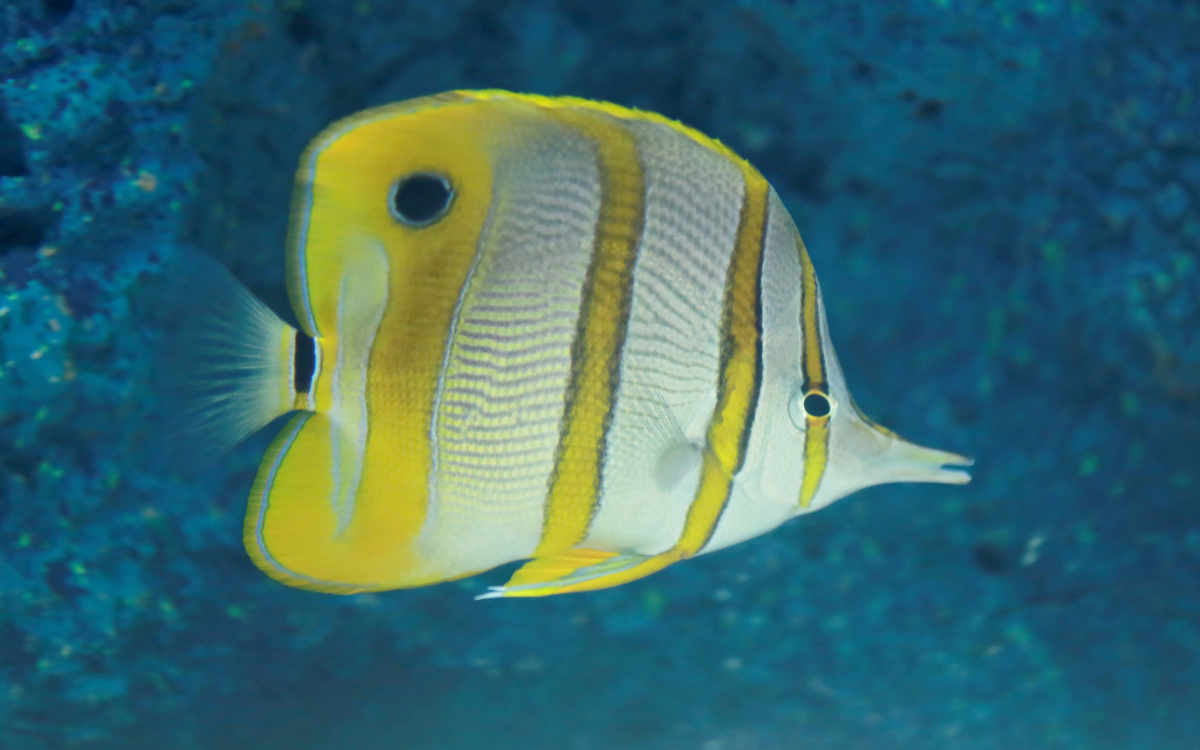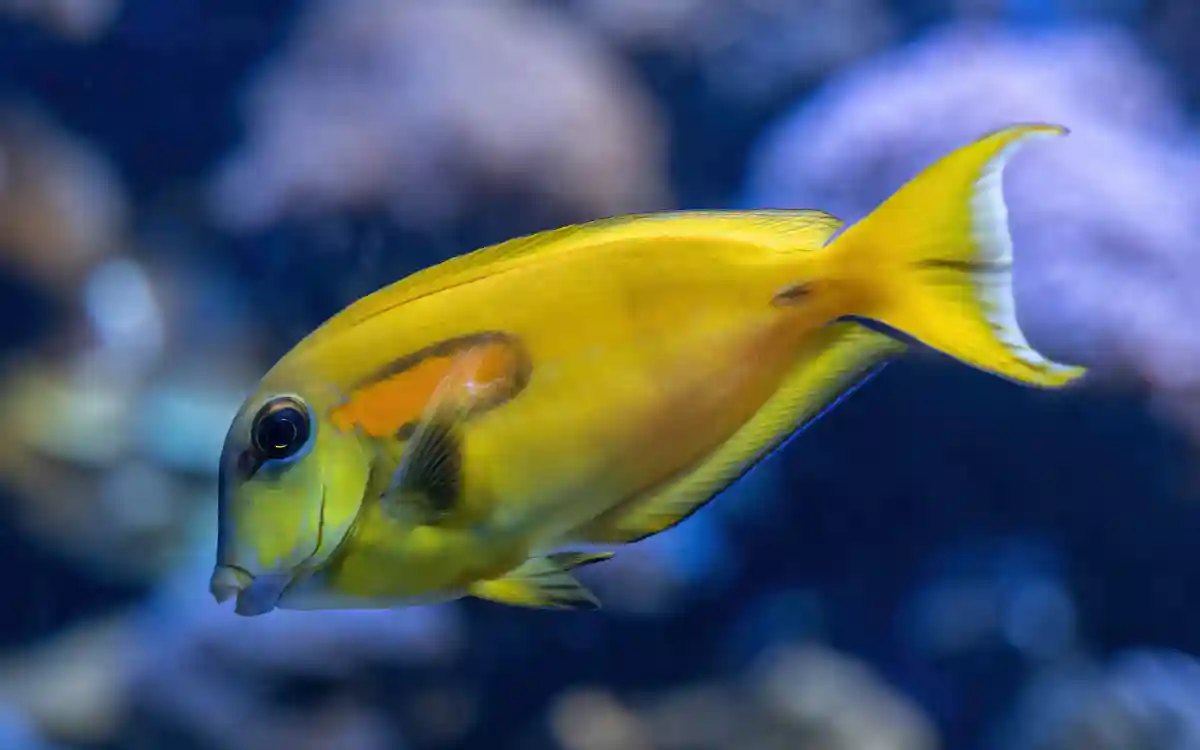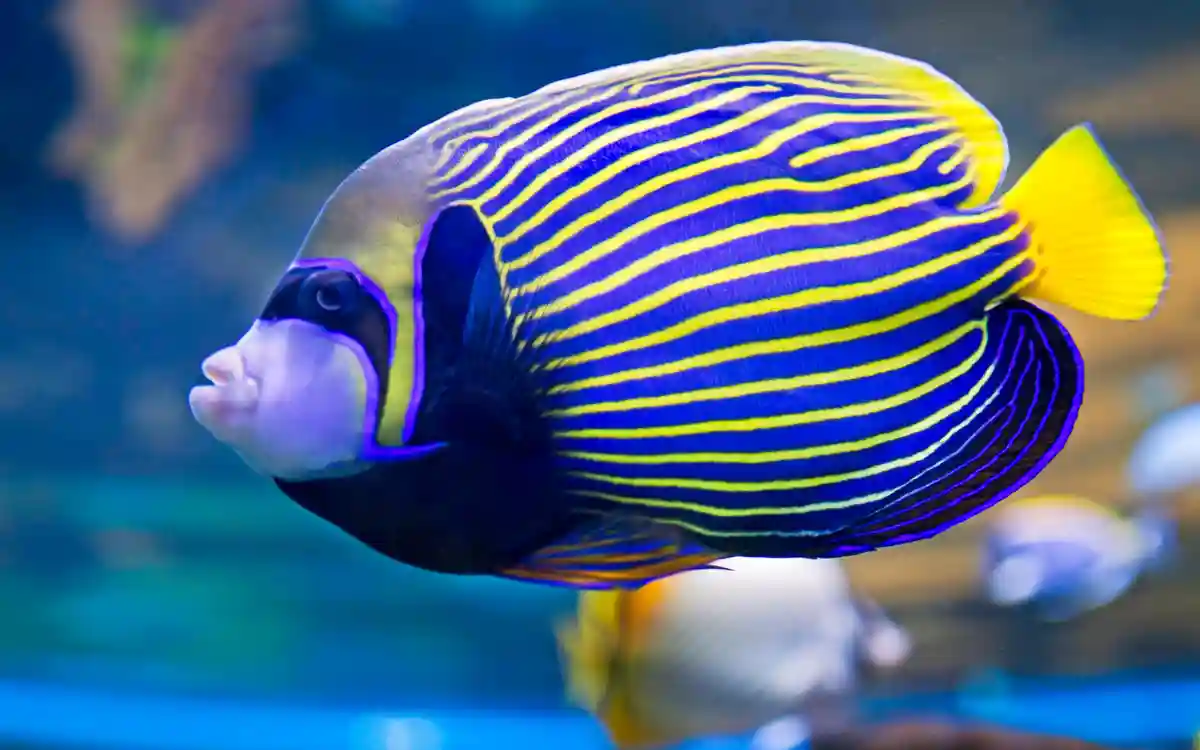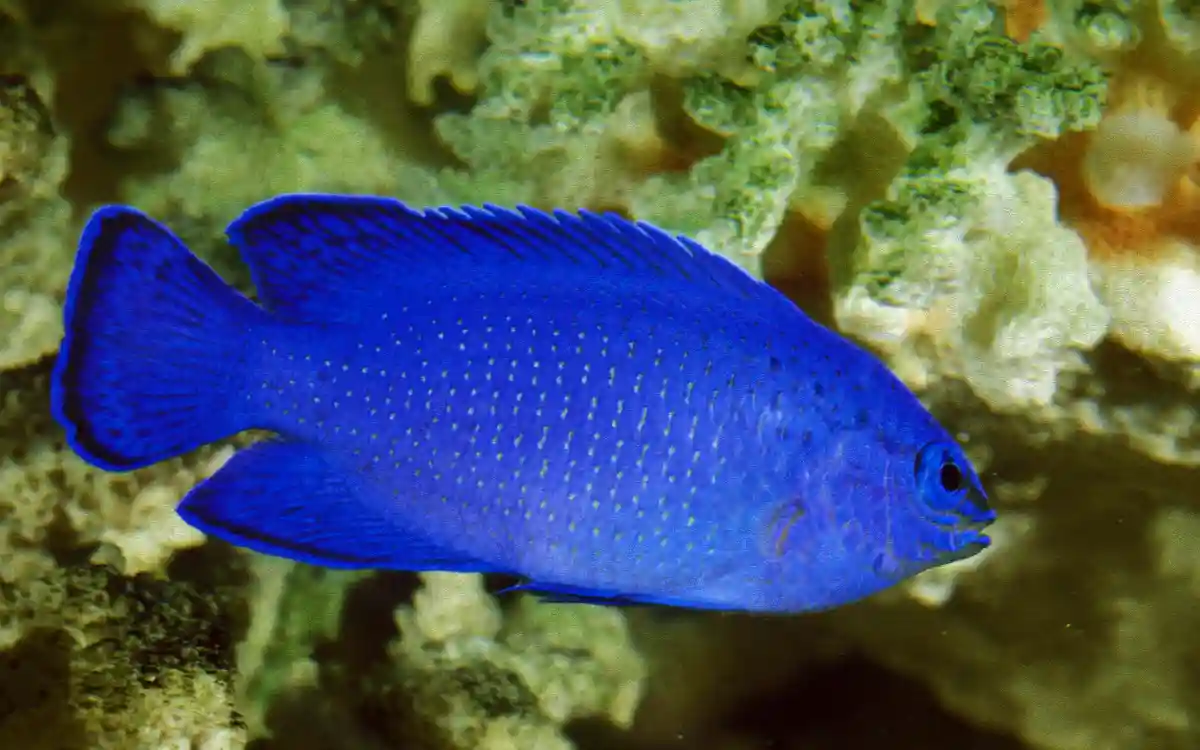Neon Goby Care Guide
If fish had job titles, the Neon Goby (Elacatinus oceanops) would be “Head of Cleaning Services.” These tiny blue-and-black beauties are famous for their cleaning habits, peaceful nature, and vibrant colors that practically glow under aquarium lighting.
I still remember the first time I added one to my reef tank. Within hours, it started picking at my tang like a miniature spa therapist. My tang froze mid-swim, clearly thinking, “Is this included in my tank rent?” That’s the kind of personality these little fish bring — hardworking, helpful, and full of charm.
If you’ve been looking for a colorful, reef-safe fish that earns its keep (literally), the Neon Goby is your guy. Let’s break down everything you need to know to keep this little electric wonder happy and healthy.
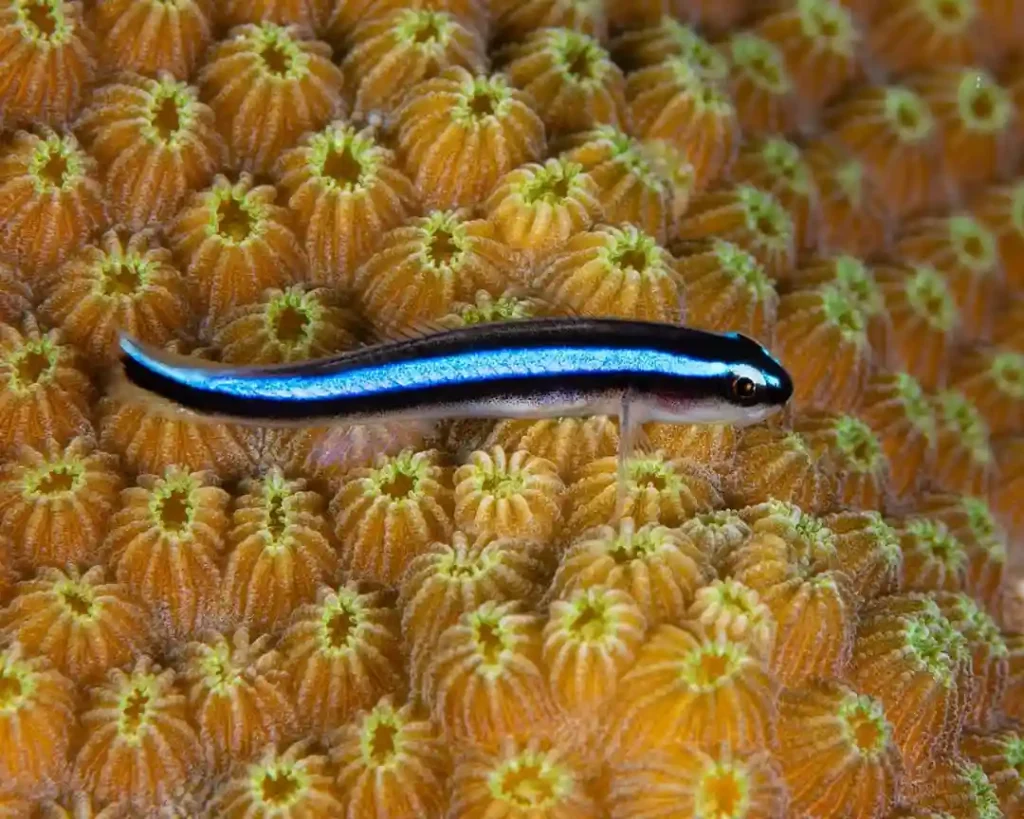
Meet the Neon Goby
These gobies come from the Caribbean and Western Atlantic, often hanging around coral reefs or sponges. You’ll recognize them instantly by their bright electric-blue stripe that runs from the nose to the tail over a dark body — simple, but stunning.
Quick Species Facts
- Scientific Name: Elacatinus oceanops
- Common Names: Neon Goby, Neon Cleaner Goby
- Size: 2 inches (yes, tiny!)
- Temperament: Peaceful
- Lifespan: 2–3 years (up to 4 with great care)
- Diet: Carnivore (small meaty foods)
- Reef Safe: 100% yes
Don’t let their size fool you. These fish are bold, curious, and surprisingly active. They’ll perch on rocks, corals, or even your hand if they trust you enough.
Tank Setup for Neon Goby
Good news — you don’t need a massive setup for this fish. The Neon Goby thrives in smaller tanks as long as you keep things stable.
Tank Size and Layout
- Minimum tank: 10 gallons (20+ preferred for pairs)
- Substrate: Fine sand or crushed coral
- Décor: Live rock for perching and hiding spots
- Tank cover: Non-negotiable — they’re jumpers
They love perching, so include rock ledges and coral branches. You’ll often see them resting on surfaces, watching the tank like little lifeguards.
And please, cover your tank. I once lost one to an Olympic-level jump while feeding — trust me, they’re faster than they look.
Water Parameters
| Parameter | Ideal Range |
| Temperature | 72–78°F |
| pH | 8.1–8.4 |
| Salinity | 1.020–1.025 |
| Ammonia/Nitrite | 0 ppm |
| Nitrate | <20 ppm |
Keep your parameters stable, especially salinity. They’re small, and small fish react quickly to sudden changes.
Feeding Your Neon Goby
These guys are carnivores, but not picky ones. They eat small meaty foods and will happily snack on aquarium pests or leftover scraps.
What They Eat
- Mysis shrimp
- Brine shrimp (enriched)
- Finely chopped seafood
- Quality marine pellets or flakes for small fish
- Copepods and microfauna (natural grazing)
Feed once or twice daily in small portions. Their stomachs are tiny — overfeeding just messes with your water quality.
Feeding Tip
Scatter food across the tank instead of dumping it all in one spot. Neon Gobies like to dart around and “hunt” their meal. It also keeps tank mates from hogging everything.
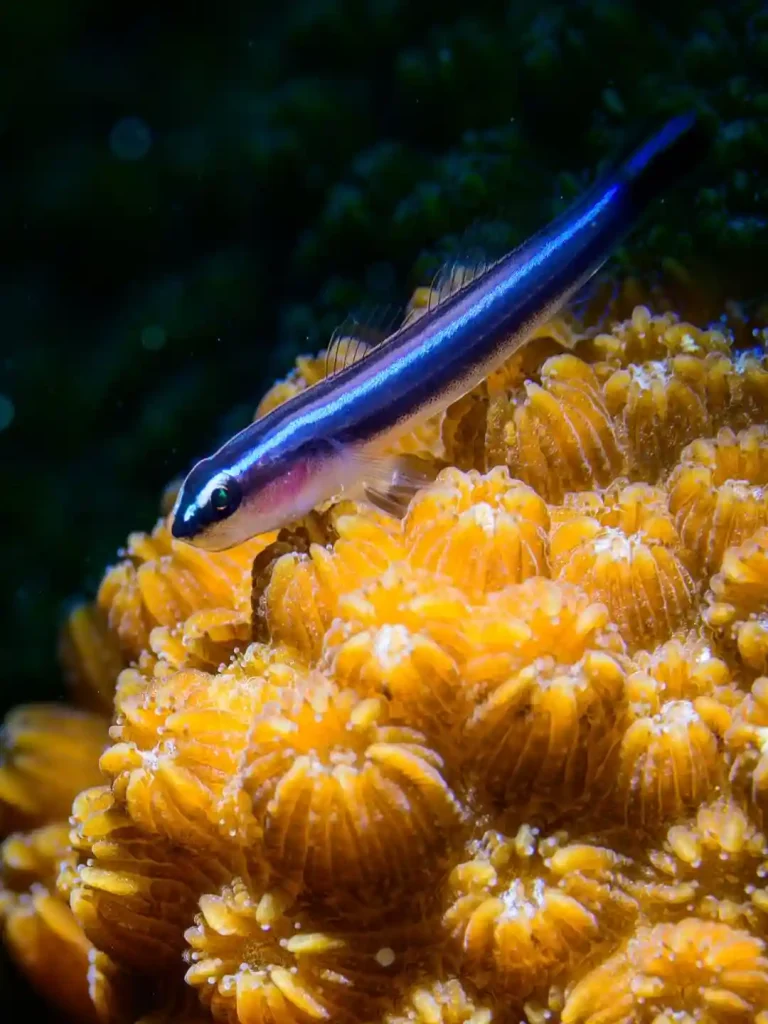
Tank Mates: Who They Get Along With
The Neon Goby might be small, but it doesn’t have a single mean bone in its body. It’s like that one friend who gets along with everyone and somehow calms down the rowdy ones.
Compatible Tank Mates
- Clownfish
- Blennies
- Wrasses
- Firefish
- Royal Grammas
- Shrimps and crabs
You can also keep them with corals, anemones, and invertebrates — totally reef-safe.
Fish to Avoid
- Large predatory fish (lionfish, groupers, triggers — they’ll snack on your goby)
- Aggressive damsels or dottybacks (too bossy for this chill little dude)
If you’re keeping multiple gobies, only do so in a large tank or as a bonded pair. Two random males in a 10-gallon tank? That’s a recipe for a showdown.
Personality and Behavior
Here’s where Neon Gobies really shine (literally and figuratively).
They’re cleaner fish, meaning they eat parasites and dead skin off other fish. You’ll often see them setting up a “cleaning station” where bigger fish line up for their spa treatment. It’s one of the coolest natural behaviors you’ll see in an aquarium.
They also love interacting with their owners. Mine used to perch on the glass and stare at me like it was trying to judge my water changes.
Despite their small size, they act like they run the place. They’ll boldly swim up to fish ten times their size to “offer services.” Pretty gutsy for a 2-inch creature.
Read also: Domino Damsel Care Guide: Tank Setup, Diet, Behavior & Tank Mates
Breeding Neon Gobies
Unlike many marine fish, Neon Gobies breed fairly easily in captivity — a rare bonus!
If you have a bonded pair:
- They’ll choose a cave or PVC pipe as a nest.
- The female lays eggs on the roof of the shelter.
- The male guards and fans the eggs until they hatch (about 7–10 days).
The fry are tiny and need live food like rotifers and baby brine shrimp to survive. Most hobbyists let them hatch naturally in a dedicated breeding setup.
It’s super rewarding if you pull it off, and hey — homegrown Neon Gobies make awesome gifts for fellow reef nerds.
Health and Common Issues
Neon Gobies are hardy, but their small size means they can’t handle poor water quality for long.
Watch Out For:
- Marine ich or velvet: Quarantine new fish to avoid spreading it.
- Starvation: Tiny mouths mean they can’t compete with fast eaters — feed carefully.
- Jumping: Cover your tank. Always.
- Stress: From strong currents or aggressive tank mates.
Regular maintenance and a calm environment will keep your goby thriving. If it’s hiding constantly or breathing fast, check oxygen levels and tank mates.
Fun Fact Corner
- They recognize tank mates. Neon Gobies often stick to specific fish for cleaning, kind of like “regular customers.”
- They’re monogamous. If you find a bonded pair, they’ll stay together long-term.
- They clean their own species. Sometimes, they even pick parasites off other gobies.
Basically, they’re tiny ocean therapists with a strong work ethic.
Quick Care Summary
| Category | Requirement |
| Tank Size | 10–20 gallons |
| Temperament | Peaceful |
| Diet | Carnivore (small meaty foods) |
| Reef Safe | Yes |
| Lifespan | 2–4 years |
| Difficulty | Easy |
| Behavior | Cleaner fish |
| Jump Risk | High – keep covered |
Pro Tips from Experience
- Feed small, frequent meals. They burn through food fast.
- Keep a lid. They jump even when you least expect it.
- Add them early. They’re peaceful and don’t claim big territories.
- Pair them up. If you can find a bonded male and female, they’re more confident and entertaining.
- Watch their interactions. They’ll quickly form “cleaning partnerships” with larger fish — it’s adorable.
FYI, if your goby loses its bright blue stripe, it’s often due to stress or poor water conditions. Fix your parameters and give it a few days — the glow will come back.
Common Mistakes to Avoid
- Keeping with large aggressive fish. They’ll become dinner.
- Neglecting tank cover. Yes, it’s that important.
- Overfeeding. Small fish, small appetite.
- Skipping acclimation. They’re sensitive to quick salinity changes.
- Pairing two males in small tanks. They’ll fight for territory.
Avoid these, and your Neon Goby will thrive and probably judge your aquascaping less. 😉
Read also: Ocellaris Clownfish Care Guide: Tank Setup, Diet, and Breeding
Why Every Tank Needs a Neon Goby
Few fish give you both beauty and function in such a tiny package. The Neon Goby doesn’t just sit around looking pretty — it actively improves your tank’s health by keeping other fish clean and eating leftover food.
They’re easy to care for, cheap, and endlessly fun to watch. Plus, they look incredible under actinic or blue reef lighting.
In my opinion, every reef tank needs at least one. They’re like the unsung heroes of the aquarium — small, flashy, and doing all the dirty work no one else wants to.
Final Thoughts
The Neon Goby is one of the best beginner-friendly saltwater fish you can own. It’s colorful, peaceful, reef-safe, and adds real value to your ecosystem.
Just keep the water stable, feed small meals, and don’t forget the lid (seriously, I can’t stress that enough). You’ll end up with a bold little fish that keeps your reef healthy and makes every tank look more alive.
If you’re after a low-maintenance, hardworking, and charming fish that lights up your aquarium — this tiny cleaner deserves a front-row seat.


